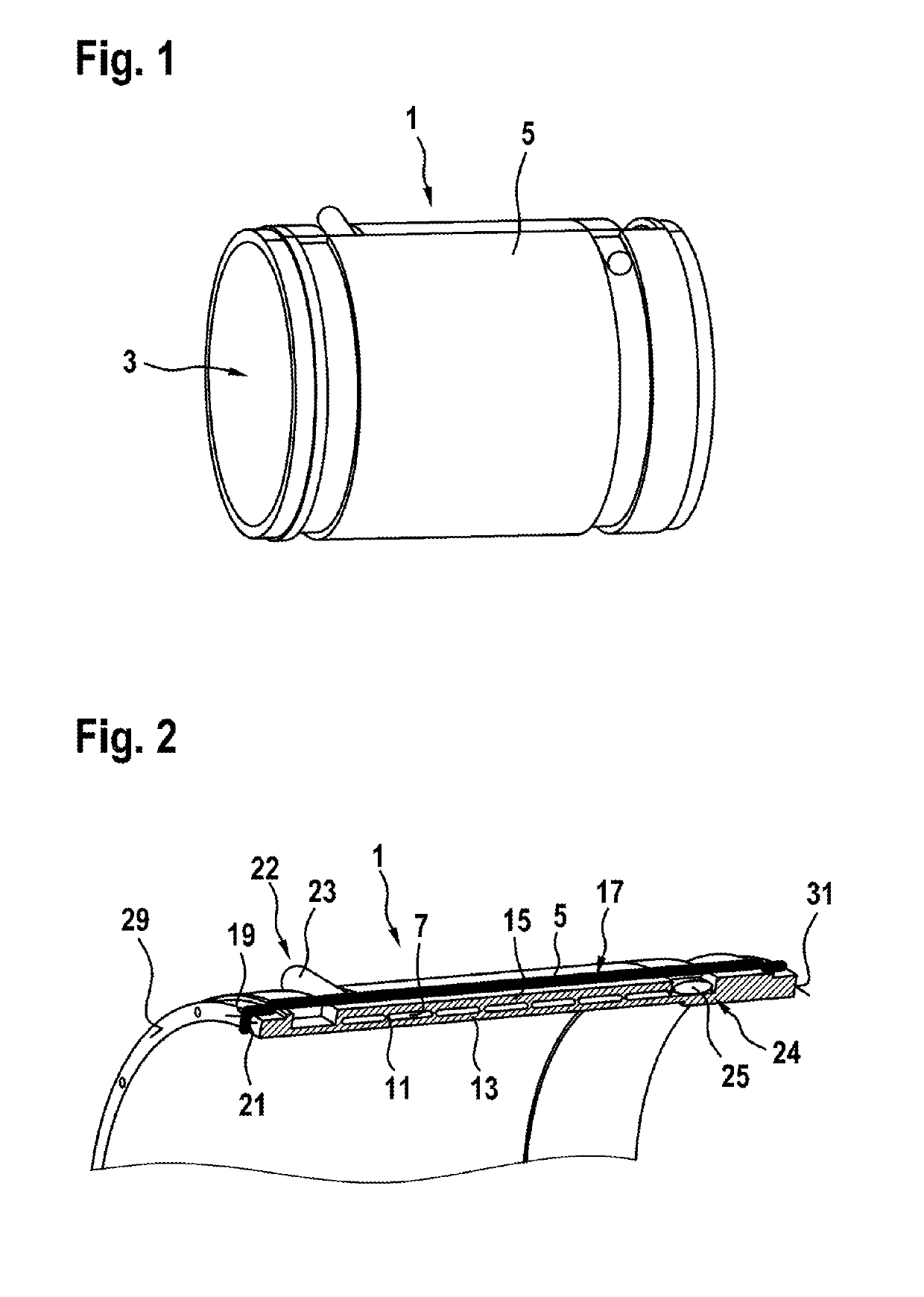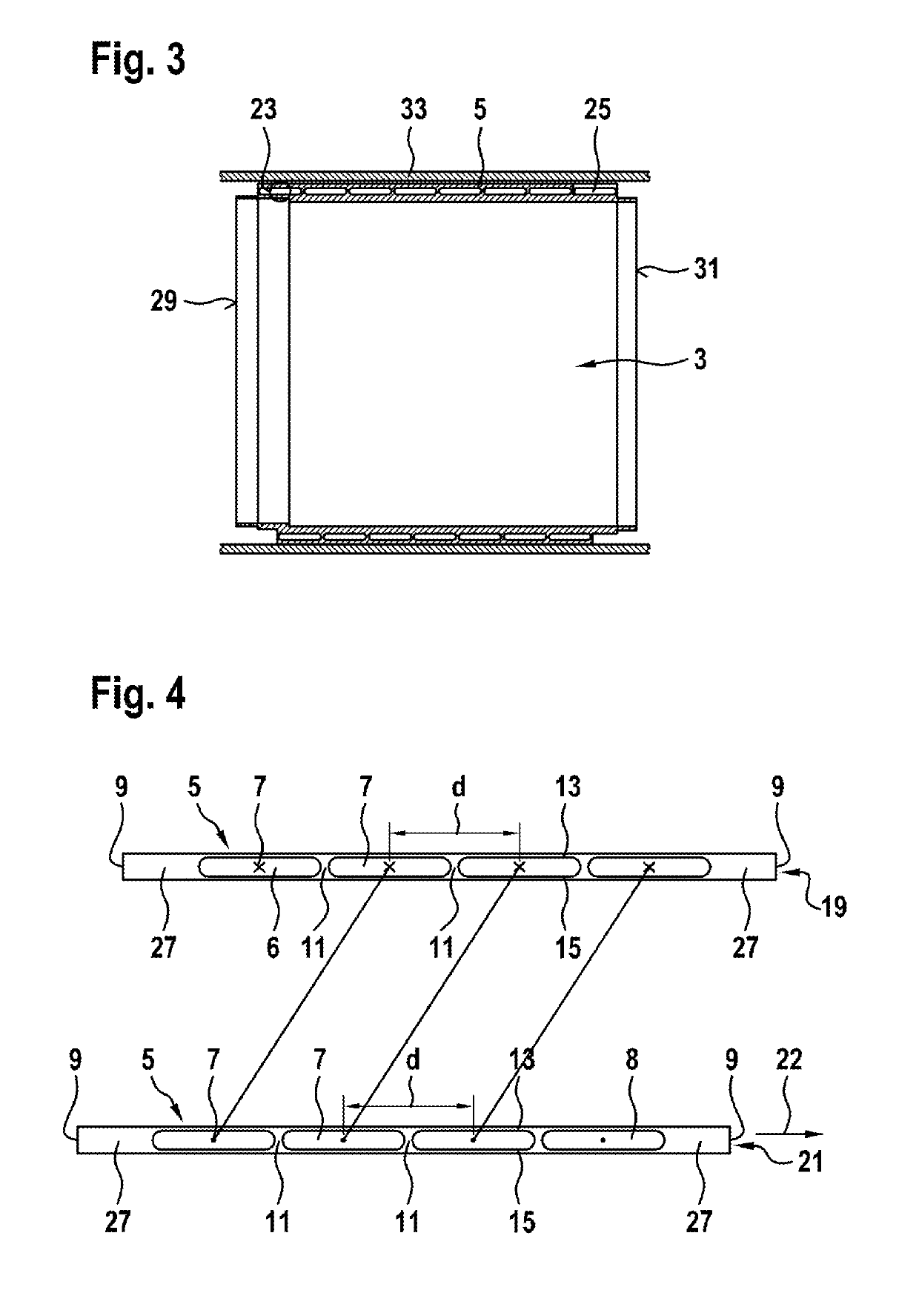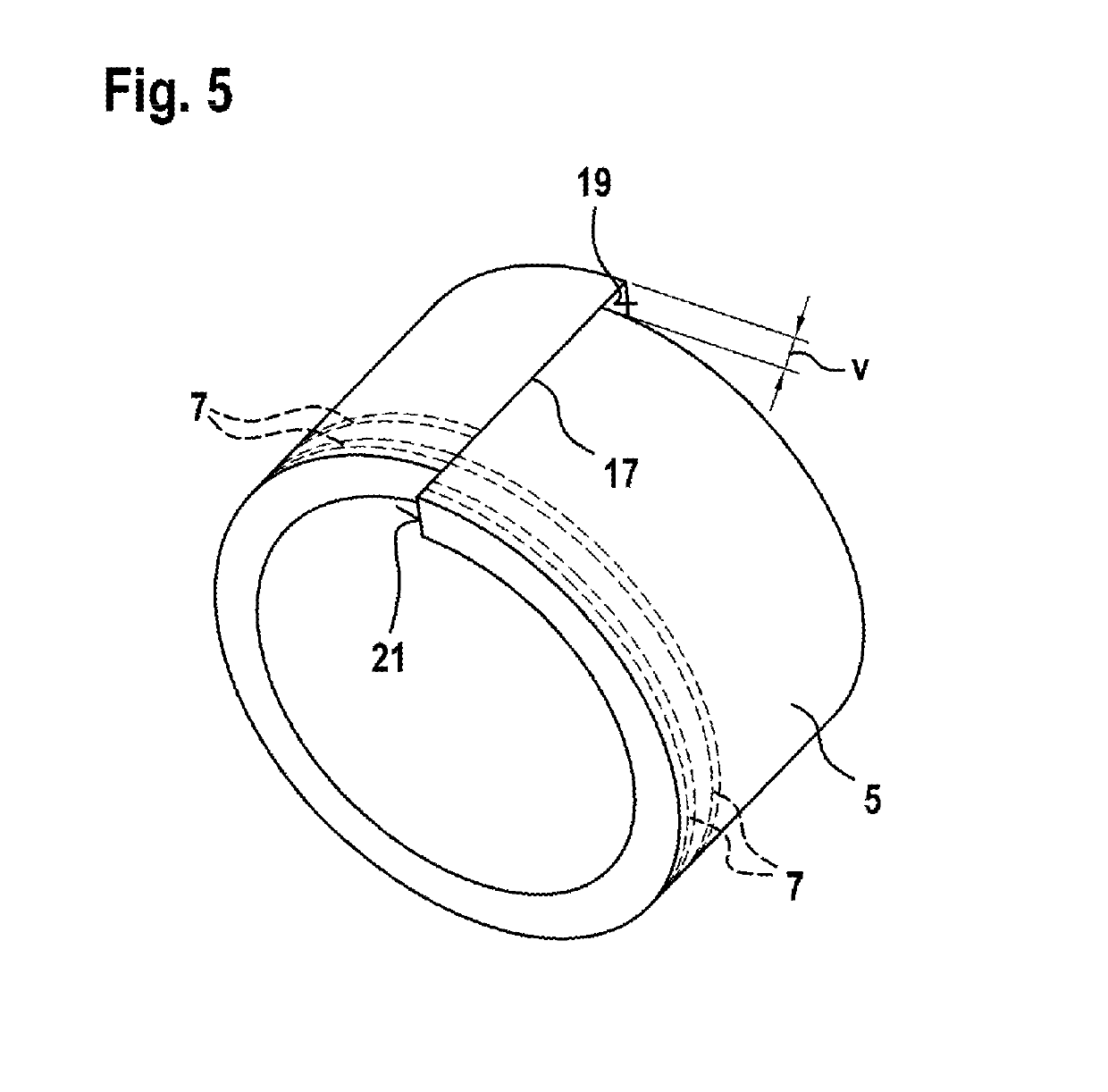Heat sink for an electric machine and method for producing said heat sink
a technology for electric machines and heat sinks, which is applied in the direction of dynamo-electric machines, electrical devices, supports/enclosements/casings, etc., can solve the problems of complex manufacturing and/or reliable sealing of the housing used for cooling, and achieves simple design, efficient dissipation, and small installation space for electric machines.
- Summary
- Abstract
- Description
- Claims
- Application Information
AI Technical Summary
Benefits of technology
Problems solved by technology
Method used
Image
Examples
Embodiment Construction
[0028]FIGS. 1, 2 and 3 show a perspective view, a partially cutaway view, and a sectional view of a heat sink 1 according to one embodiment of the invention. The heat sink 1 has a cylindrical shape. A cylinder diameter can be suitably selected in order to enable, for example, a stator of an electric machine (not shown) to be accommodated in an inner chamber 3 of the heat sink 1. The cylinder diameter can be between 2 cm and 100 cm, preferably between 5 cm and 40 cm, for example. An axial length of the heat sink can typically be between 5 cm and 200 cm, preferably between 10 cm and 50 cm.
[0029]The heat sink 1 can be formed with the aid of a plate 5; a sectional view of two abutting surfaces 19, 21 of said plate, which are located on end faces positioned opposite each other, is shown in FIG. 4. The plate 5 can be initially flat. Said plate can have a thickness, for example, between 0.5 cm and 20 cm, preferably between 1 cm and 5 cm. The plate 5 can consist of a thermally highly conduc...
PUM
 Login to View More
Login to View More Abstract
Description
Claims
Application Information
 Login to View More
Login to View More - R&D
- Intellectual Property
- Life Sciences
- Materials
- Tech Scout
- Unparalleled Data Quality
- Higher Quality Content
- 60% Fewer Hallucinations
Browse by: Latest US Patents, China's latest patents, Technical Efficacy Thesaurus, Application Domain, Technology Topic, Popular Technical Reports.
© 2025 PatSnap. All rights reserved.Legal|Privacy policy|Modern Slavery Act Transparency Statement|Sitemap|About US| Contact US: help@patsnap.com



